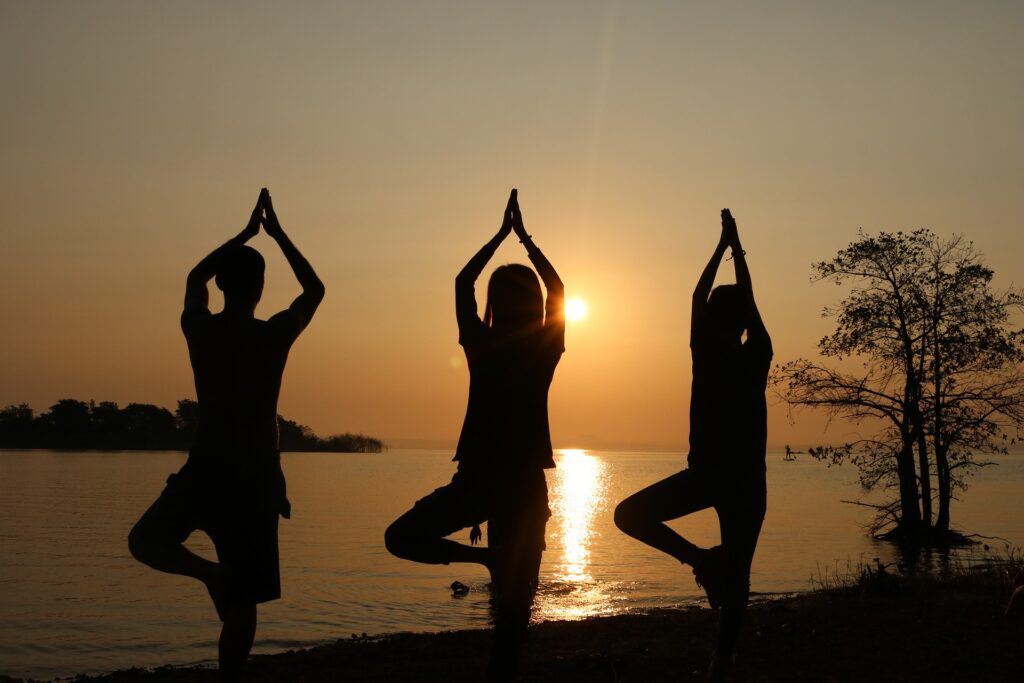The history of yoga is as old as civilization, deeply related to spirituality, philosophy, and wellness. From sacred practice in India over a thousand years ago, yoga has spread to become a global phenomenon, associated with physical and mental well-being. The same questions arise though the genesis of yoga is quite difficult. But who developed yoga? For how long has yoga been around? The documentation of yoga presents us with a chance to truly appreciate its origin, along with its changes and why it matters today.
From ancient Indian religious scripts to a billion-dollar wellness industry, this journey of yoga is quite extraordinary. It survived through thick and thin, undergoing transformation through cultural upheavals but remaining true to its core. Let us use this golden opportunity to dive deep into the rich history of yoga and learn how it influenced the world we live in.
Where Does Yoga Originate From?

Yoga’s roots trace back over 5,000 years, with some scholars believing it could be over 10,000 years old. Ancient texts from India, particularly the Rig Veda, contain references to yoga, indicating its deep historical presence. The history of yoga is primarily linked to India’s philosophical traditions, where it was developed as a means to unite the body, mind, and soul.
- The Vedic Era and Early Mentions
The earliest evidence of yoga appears in the Vedas, the sacred texts of Hinduism. The Rig Veda mentions practices resembling meditation and spiritual discipline, laying the groundwork for what would later become formalized yoga. During this period, sages and rishis practiced deep contemplation to connect with the divine.
- The Upanishadic Influence
The Upanishads, written between 800–400 BCE, expanded on the spiritual aspects of yoga, emphasizing self-realization and the pursuit of knowledge. These texts introduced the concept of Brahman (the ultimate reality) and Atman (the self), which influenced later yogic teachings. The shift from mere ritualistic practices to self-inquiry and meditation marked a significant evolution in the history of yoga.
Who Developed Yoga?
While yoga evolved over centuries, several key figures contributed to its development and spread.
- Patanjali and the Yoga Sutras
Perhaps the most significant contributor to the history of yoga is Patanjali, who compiled the Yoga Sutras around 200 BCE. Patanjali’s work structured yoga into a systematic practice, defining the famous eightfold path of yoga, known as Ashtanga Yoga, which includes: Yama (ethical restraints), Niyama (self-discipline), Asana (physical postures), Pranayama (breath control), Pratyahara (withdrawal of senses), Dharana (concentration), Dhyana (meditation), Samadhi (ultimate enlightenment). Patanjali’s work remains a cornerstone of classical yoga philosophy and is still widely studied today.
- Hatha Yoga and the Tantric Tradition
During the medieval period (9th-15th century), Hatha Yoga emerged as a more physical form of practice, focusing on body postures (asanas), breath control (pranayama), and purification techniques. This period saw yoga shifting from purely spiritual pursuits to methods that also improved physical well-being. The physicality of Hatha Yoga made it more accessible to a broader audience, allowing practitioners to strengthen their bodies as a means of attaining higher states of consciousness.
- Modern Yoga Gurus
The late 19th and early 20th centuries saw the rise of yoga masters like Swami Vivekananda, Tirumalai Krishnamacharya, B.K.S. Iyengar, and Pattabhi Jois, who played a crucial role in bringing yoga to the West. Their teachings blended traditional philosophies with practical techniques, making yoga accessible to a global audience. The emphasis on physical fitness, therapeutic benefits, and spiritual connection resonated with millions worldwide.
Yoga Originated From Which Country?
Without a doubt, yoga in India has shaped the global understanding of mind-body wellness. India is the birthplace of yoga, with its traditions deeply rooted in Hindu, Buddhist, and Jain philosophies. In 2014, the United Nations recognized June 21 as International Yoga Day, a testament to India’s lasting influence on global health and spirituality. The widespread acknowledgment of India’s role in yoga’s development reinforces the importance of respecting its ancient roots while embracing its modern adaptations.
How Long Has Yoga Been Around?
Yoga’s journey spans millennia, evolving through various historical phases.
- Pre-Vedic and Indus Valley Civilization (3000 BCE)
Archaeological discoveries from the Indus Valley Civilization (modern-day India and Pakistan) depict seals with figures sitting in meditative postures, suggesting that yoga-like practices existed as early as 3000 BCE.
- Classical Yoga (200 BCE – 500 CE)
This period saw yoga taking a structured form through Patanjali’s Yoga Sutras, setting the foundation for disciplined spiritual and physical practice.
- Medieval Yoga (9th – 15th Century)
The rise of Hatha Yoga and Tantric practices made yoga more accessible by incorporating physical postures and breathing techniques, influencing later schools of yoga.
- Modern Yoga (19th Century – Present)
Yoga’s expansion to the West began in the late 1800s, with Swami Vivekananda introducing it to Western audiences. The 20th century saw yoga evolving into a global fitness and wellness trend, with contemporary styles like Vinyasa, Power Yoga, and Yin Yoga gaining popularity.
The Spread of Yoga to the West

Yoga’s journey from the temples of India to studios across the world was neither sudden nor accidental. It was the result of centuries of spiritual exploration, followed by cultural exchanges between the East and the West. As yoga expanded beyond its traditional roots, it adapted to modern lifestyles, making it more accessible to diverse populations.
- The 19th and 20th Century Influence
Yoga began gaining Western recognition in the late 1800s when Swami Vivekananda introduced it at the Parliament of the World’s Religions in Chicago (1893). His teachings on Raja Yoga sparked interest in the West, where yoga became associated with self-discipline and spiritual enlightenment.
- Yoga in the 21st Century
Today, yoga has become a global industry, with millions practicing it for stress relief, fitness, and mental clarity. From corporate offices to Hollywood celebrities, yoga has transcended cultural boundaries, cementing itself as a mainstream wellness practice.
Why Does Yoga Remain Relevant Today?
Despite its evolution, yoga remains deeply connected to its spiritual origins. Many people practice yoga not just for physical fitness but also to achieve mental peace, emotional balance, and spiritual enlightenment. The increasing popularity of mindfulness meditation, holistic healing, and Ayurveda further emphasizes yoga’s relevance in today’s fast-paced world.
What is the Science Behind Yoga?

Scientific studies have shown that yoga offers numerous health benefits which include reducing stress and anxiety, improving flexibility and strength, enhancing focus and mental clarity, better sleep and relaxation, and a stronger immune system. These benefits have made yoga an integral part of modern healthcare and wellness routines.
Conclusion
The history of yoga is a testament to its timeless appeal and profound impact on human well-being. Originating in ancient India, yoga has transformed into a universal practice that bridges the gap between the past and the present. From spiritual seekers to fitness enthusiasts, millions worldwide embrace yoga for its holistic benefits.
As yoga continues to evolve, its essence remains unchanged—uniting the body, mind, and soul. Whether practiced for spirituality, health, or inner peace, yoga continues to be a guiding force for personal transformation and global well-being. Its journey is far from over, as new generations continue to discover the power of this ancient tradition, ensuring that yoga’s legacy will thrive for centuries to come.
Read more about Yoga here.
Related post:










